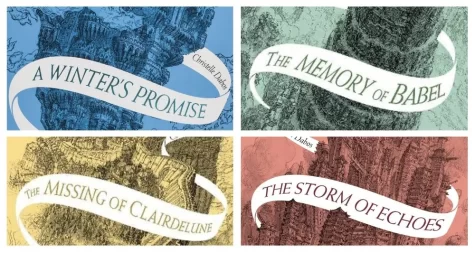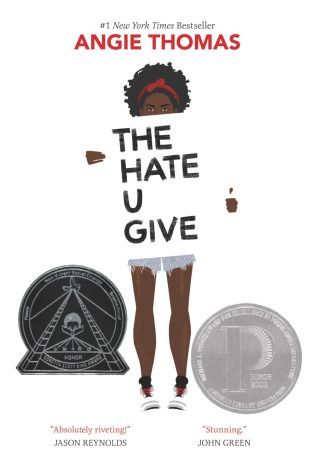Book Review: Redwall

A sanctuary in the middle of Mossflower Forest, Redwall Abbey is the home of peaceful woodland creatures, including Matthias, a youthful and somewhat clumsy mouse who harbors dreams of becoming a warrior. But afters years of peace, Matthias’s dreams have a chance to become reality when the much feared rat warlord Cluny the Scourge marches down the road with his horde of vermin, bent on conquering Redwall. Along with the Abbey inhabitants, Matthias rushes to provide for the defense of Redwall, knowing that if they fail, the world as they know it will be transformed before their eyes for the worse.
When I first picked up the book “Redwall”, I was skeptical. I don’t often choose to engage in books with animals as main characters, as I find that it is easier to relate to characters who are human than ones that are animals.
However, once I read the first few pages, I found myself beginning to grow attached to the protagonists. It was easy to get to know them, as “Redwall” was written with multiple point of views from many of the characters. They are each very unique, paired with a range humorous to adventurous personalities. Methuselah, for example, is an old mouse with wise thoughts, yet always eager for a good adventure. Another thing I liked was how not all the female characters were stuck in the kitchens or tending to the wounded, but instead were out fighting in the battle along side with the others. Many of the female squirrels were archers that served in the front line, and the other animals did whatever they could to help, from serving food, to battling with the evil rats.
The plot is simplistic yet exciting and all the events seem to flow right into each other. With Brian Jacques descriptive writing, it was easy to imagine the serene forest that they lived in, and the feasts were simply delightful. It felt like the food was just sitting there right in front of me, as if I could see it with my own eyes, tasty enough to make my mouth water.
When Matthias and Methuselah, an elderly mouse and companion are solving the riddles in order to find Martin’s sword, they run into many riddles that leave readers racking their brains trying to find the hidden clue. Watching them put the pieces together and have the answers unfold in front of them was extremely satisfying.
One of my favorite parts of the characterization is the language of the moles. Their language is unique and intriguing, while also hilarious to read. “Urr, that be true, zurr. Our grandmum, she’m foind lots o’them.” One of the moles states while helping out Matthias and Methuselah in their quest to find the ancient sword of Martin the Warrior. Although at times it can be difficult to understand, most of it is considerably easy to translate.
Jacques’s writing style is definitely unique. His riddles are well thought out, and he was clearly very creative in the making of the language of the sparrow and the mole. “Brian Jacques did a great job of characterization, and I really liked how adventurous and suspenseful it was,” 7th grader Max Segrest said.
I would recommend “Redwall” to anyone who enjoys reading fantasy or adventure, and is looking for a good read. If you enjoy the first book of the “Redwall” series, there are many other books in the series with the same feel.
-Jenny Xu

I am a huge fan of fantasy, including the variety where main characters are animals. Usually, it’s no problem for me to imagine and believe in the world where the animal fantasy takes place. But Brian Jacques’s “Redwall” was definitely an exception.
Right from the start of the book, I was confused by the scale of the world. A two pound fish can feed a whole abbeyful of mice, so mice seem to be the same size as they are in our world. However, the mice’s home seems to be rather large. Badgers, who are about three feet long, can fit through doors, as can foxes. It’s unrealistic that an abbey built by mice and for mice can accommodate creatures so many times larger than them.
Also relating to the world, I find it boring that you can tell the morality of a character from just looking at their species. All mice, badgers, hedgehogs, moles, voles, squirrels, and hares are good. Rats, stoats, snakes, ferrets, weasels and foxes are bad. This system not only makes for a predictable plot centered around good characters fighting back evil invaders, but simplistic personalities that don’t always make sense. As Meryl J., a 7th grader, summarizes, “The characters didn’t seem realistic to me, and everything was overly dramatic.”
Cluny the Scourge, the main antagonist, is a prime example. He is purely evil, but his motives are silly for a mastermind warlord. After he conquers land, he enslaves its inhabitants, and then immediately leaves with his army to conquer something else. What benefit does that have for him? Most wars are fought over land ownership, and if Cluny puts so much effort into his campaigns and never utilizes the land to its full potential, it’s ridiculous for him to walk away with only a few valuables and a boosted reputation for being ruthless.
Beyond that, even behaviors of the animals do not make sense. Matthias, the main protagonist, is a clumsy, youthful mouse in overly large sandals at the beginning of the story. Then a few chapters later, without any form of training , he is an expert at weaponry and coordination, and also gains an ability to speak extremely well, in contrast to his earlier stumbles such as swapping the words “abbot” and “habit.”
For me, though the plot and characters were standard, the descriptions were the best part of the story. The scenery in Mossflower was described beautifully, and scenes with feasts were enough to make me long for the food. The puzzle Matthias and Methuselah, his advisor, solve on their quest to find the ancient warrior Martin’s sword is well thought out. Even the characters were likable in a way when looked at from this perspective, because even if they sounded simpleminded, they had the cutest descriptions.
That said, I enjoy Jacques’ writing style except for one problem: his fondness of the exclamation point. One seems to appear at least every other page. After a while, the exclamation points lose their meaning and instead make it look like a failed attempt by the author to put nonexistent excitement into his story.
I think that emotion as a whole is a problem for Jacques. It sounds terrible, but I don’t actually feel any sadness for characters who die, and the funny moments friends share aren’t actually humorous.
Overall, I would recommend this book to children who are not too obsessive about details of the story that add to realism. People who enjoy “Redwall” should read the rest of the twenty-two book long series, in which they’ll find more of the same type of plot, characters, and writing style.
– Amy Vo




















